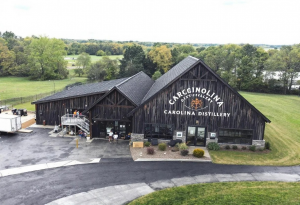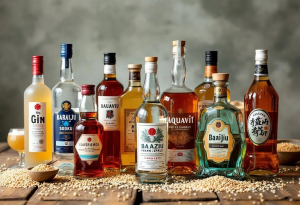I’ve spent years immersed in the world of spirits, from my time at Maker’s Mark to advising craft distilleries. And let me tell you, watching a spirit age is pure magic. But it’s not just magic. It’s science. A complex dance of chemistry and time. This is what transforms a raw distillate into something truly special. So, let’s explore the science behind spirit aging.
The Barrel’s Secret Role in Spirit Transformation
The oak barrel? It’s the unsung hero. More than just a container, it actively shapes the spirit. The type of oak, char level, and even what it held before all matter. American white oak, packed with vanillin, is perfect for bourbon. It gives those vanilla and caramel notes we all love.

But what actually happens inside? Think of it this way:
- Extraction: The spirit pulls compounds from the wood. Tannins, vanillin, lactones. These add color, flavor, and aroma.
- Substraction: The char layer acts like a filter. It removes harsh compounds, like sulfur.
- Addition: The barrel? It adds its own flavors. This depends on the oak and char level.
- Interaction: The spirit interacts with oxygen. It breathes through the wood. This leads to oxidation.
Oxidation: Slow and Steady Wins the Race
Oxidation is tricky. Too much? You get a stale, cardboard flavor. But just enough? It unlocks a world of complexity. Like letting a fine wine breathe. Oxygen softens harsh edges. It develops richer, more nuanced flavors. This is key for whiskies. Oxidation mellows the initial bite. It brings out hidden fruit and spice.
The Angel’s Share: A Heavenly Loss
The angel’s share. Sounds romantic, right? It’s the spirit lost to evaporation during aging. The rate depends on climate and humidity. Hot climates, like Kentucky, mean a bigger angel’s share. This concentrates flavors faster. It also leads to a higher proof. It’s costly for distillers, sure, but great for flavor. Think of it as a sacrifice for quality.
Maturation: A Symphony of Reactions
Maturation is where the real magic happens. A complex dance of chemical reactions. It transforms the spirit at a molecular level.
Let’s break down some key players:
- Esterification: Acids and alcohols react. They form esters. These add fruity and floral aromas.
- Hydrolysis: Esters break down. Releasing acids and alcohols. This further adds to complexity.
- Oxidation: Alcohols turn into aldehydes and ketones. Adding nutty and spicy notes.
These reactions are affected by temperature, humidity, and wood type. The spirit mellows. It develops complexity. It takes on its unique character over time. It’s not a quick process, but it’s worth the wait.
Congeners: The Flavor Building Blocks Explained
Congeners are compounds made during fermentation and distillation. They give spirits their flavor and aroma. Alcohols, esters, aldehydes, and acids are all congeners. Some are good, some are… not so good. Aging mellows the harsh ones. It develops the desirable ones. For example, fusel alcohols can cause a burning sensation. But they decrease over time. Esters, which add fruity aromas, increase.
Cask Strength: The Untamed Spirit
Want a peek behind the curtain? Cask strength spirits are your answer. Bottled straight from the barrel, without dilution. You get the full intensity. All the flavors and aromas, untouched. It’s a bold experience, no doubt. But it lets you truly taste the aging process. It’s like tasting the spirit’s soul. Unfiltered. Unadulterated.
Unlocking Flavor Profiles: A Journey Through the Years
Aging completely changes a spirit’s flavor. A young spirit can be harsh and grainy. With a strong alcoholic kick. But years of aging? It transforms into something smooth, complex, and nuanced.
Think of a young rum: fiery and raw. Now, picture a well-aged rum: rich with molasses, dried fruit, and spice. Or a young whiskey: sharp and astringent. Compare it to a mature whiskey: mellow with caramel, vanilla, and oak. The difference is night and day.
The Art and Science of Spirit Aging
Aging spirits? It’s both an art and a science. You need to know the chemical processes. You also need a good sense of taste and smell. It’s about creating the right environment. So the spirit can evolve and reach its full potential. I’ve seen this transformation firsthand. And it’s truly remarkable. So, next time you sip an aged spirit, think about the science and art behind it.


